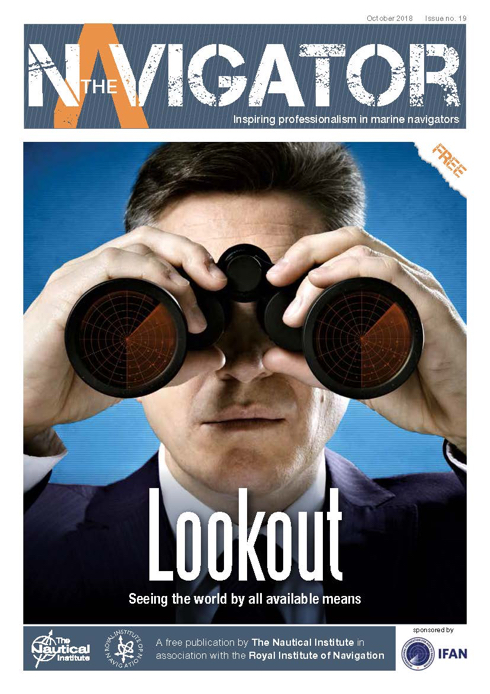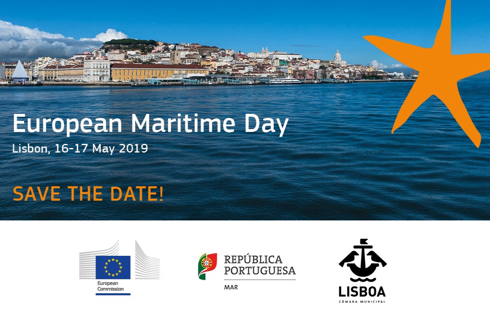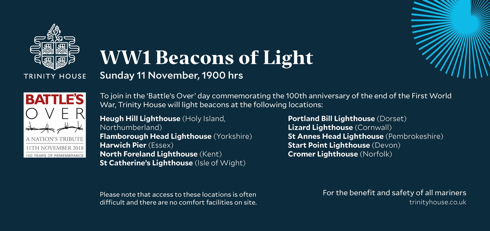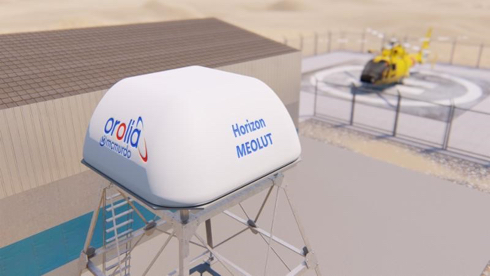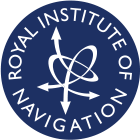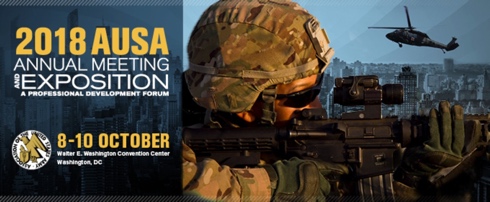RAF No 1 (F) Squadron on exercise
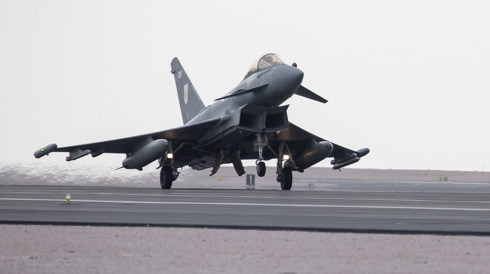
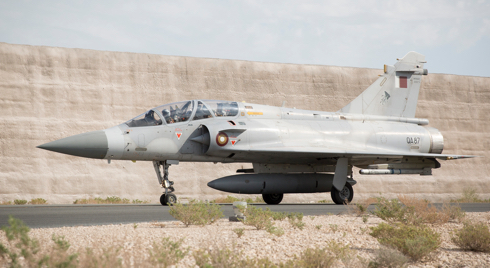
Wing Commander Mark Baker, OC N°1 (Fighter) Squadron, led his team on the first sortie of the joint UK/Qatari Exercise EPIC SKIES II which commenced on 11 November. Launching alongside two of the Qatari Emiri Air Force (QEAF) Dassault Mirage 2000-5 aircraft, the UK Typhoons took part in counter air training and capability demonstrations, ahead of the QEAF’s procurement of 24 Typhoon aircraft from the UK and the formation of the joint RAF/QEAF Number 12 Squadron.
The latest edition of The Navigator is available
Readers are able to appreciate the seafarer’s method of keeping watch as the Nautical Institute’s October journal The Navigator (N°19) explores the important role of a ship’s lookout, and the challenges which arise on duty.
Discussion begins with Captain Rajiv Singh who investigates the mechanisms by which the human eye works, and how these affect our effectiveness as lookouts. Later, Captain Trevor Bailey offers valuable insight into watchkeeping on the bridge by considering not just optical observation, but radar, AIS and the magic of the navigator’s intuition.
Madagascar by ESA’s Copernicus Sentinel
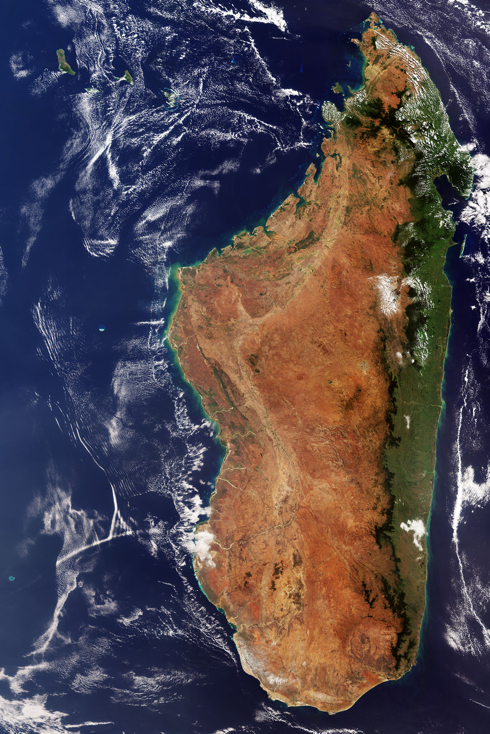
The Copernicus Sentinel-3 mission takes us over Madagascar. This huge island nation, located off the east coast of Africa and seen in the right of the image, has a population of around 25 million. More than half of the country’s inhabitants are aged under 25. The island is also home to rare flora and fauna, having developed its own ecosystems and wildlife since splitting from the African continent some 160 million years ago.
Preserving its impressive biodiversity is an ongoing challenge for the country. With an area of almost 600 000 sq km, Madagascar is the fourth largest island in the world. Some of the world’s most extensive coral reef systems, huge mangrove areas, and a vast array of birds, lemurs, and many other species can be found here. Deforestation poses a serious threat to the island’s habitats, with illegal wildlife trade representing a further challenge.
Galileo smartphone app competition
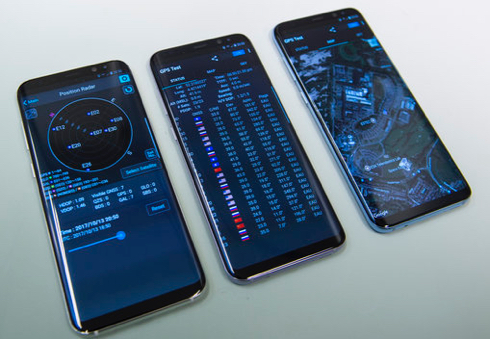
Students and research trainees across Europe have been invited to take part in ESA’s new Galileo smartphone app competition – to develop an app capable of performing fixes using raw Galileo satnav measurements.
Run by ESA in collaboration with the European Global Navigation Satellite Systems Agency – GSA – plus the European Commission with the support of Google, this Galileo app competition is open to all students from European universities and trainees in posts at European research and development organisations.
The competition launched on 24 September 2018, and teams have been invited to submit their proposals by 12 November, to be informed of the jury’s response to their proposal by 26 November. The competition final is scheduled for 18 April next year at ESA’s ESTEC technical centre in Noordwijk, the Netherlands.
ICAO and unmanned aviation
The International Civil Aviation Organisation (ICAO) RPAS team has issued Unmanned Aviation Bulletin (2018/3). This document reports on unmanned aviation operational and regulatory developments. The Bulletin clarifies Key Terms applying to Remotely Piloted Aircraft Systems (RPAS), Unmanned Aircraft Systems (UAS) and related activities.
It would be appreciated if this material could be disseminated widely by readers.
International Civil Aviation Day was established in 1994 as part of ICAO’s 50th anniversary activities. In 1996, pursuant to an ICAO initiative and with the assistance of the Canadian Government, the United Nations General Assembly officially recognized 7 December as International Civil Aviation Day in the UN system.
Offshore Survey 2019 – Call for abstracts
Organisers of Offshore Survey 2019 advise that it will once again be held alongside the Ocean Business event, from 9 – 10 April 2019 in Southampton, UK. This will be the sixth Offshore Survey conference and all interested parties are invited to submit an abstract online by 14 December 2018. Each abstract will be peer-reviewed and a final programme will be announced in January 2019.
European Maritime Day
The City of Lisbon invites delegates to celebrate European Maritime Day 2019 which will take place there on 16-17 May. EMD is the annual EU meeting point on maritime affairs and blue growth. It targets maritime professionals, entrepreneurs and ocean leaders. The event and exhibition will take place at the Lisbon Congress Centre. Once again there will be offered an attractive programme and great networking opportunities. According to The European Maritime Day Team, focus in 2019 will be on blue entrepreneurship, innovation and investment.
Deadline for abstracts for Pacific PNT 2019 conference
The deadline for submitting abstracts for the Institute of Navigation’s (ION) Pacific PNT 2019 conference is Thursday, 1 November 2018.
Pacific PNT 2019 is organized by the prestigious Pacific Rim Advisory Board and will feature peer reviewed and indexed technical papers presented on a diverse array of topics with special invited sessions being highlighted in BeiDou, COSMIC/FORMOSAT and QZSS.
IAAC guest workshop
Moshe Idan, IAAC President aAdvises that the IAAC guest workshop entitled: “Model Predictive Control: Concepts, Algorithms, Tools, and Applications” will be held on 5 November 2018, in the Daniel Hotel, Herzelia.
The workshop will be delivered by Professor Alberto Bemporad from the IMT School for Advanced Studies, Lucca, Italy.
Trinity House commemorates the end of the First World War
On 24 October Trinity House London announced that lighted beacons will mark the 100th anniversary of the end of the First World War which falls on Sunday 11 November, Armistice Day. By way of tribute a series of unique events are being organised, including what are known as WW1 Beacons of Light in which Trinity House is proud to take part. At 1900 over 1,000 gas-powered Beacons of Light will be lit up and down the land, symbolising an end to the darkness of war and here a number of Trinity House lighthouses and locations will play a part and be lighted by volunteers from Trinity House. Members of the public have been invited to join at the locations listed below to take part in this unique event.
The event is inspired by the 1914 Foreign Minister, Sir Edward Grey, looking out of his office window at dusk as gas lights were being lit along London’s Mall remarking to a friend ‘The lamps are going out all over Europe; we shall not see them lit again in our lifetime.’
New products and services from Orolia
In mid-October Orolia, a world leader in resilient Positioning, Navigation and Timing (PNT) provision introduced its new McMurdo Horizon™ system (illustrated), said to be the world’s first S- and L-band compatible phased-array system. This features antennas developed by Ball Aerospace with all-seeing, horizon-to-horizon coverage to reliably capture search and rescue signals relayed from orbiting satellites immediately after line-of-sight is established.
The technology team behind this latest innovation includes Orolia’s McMurdo subsidiary, providers of emergency readiness and response devices, and a world leader in the design, development and installation of search and rescue ground- based infrastructure, and Ball Aerospace. The latter brings sophisticated phased-array antenna technology to the challenge of enhancing global search and rescue programs.
INC 2018
The Royal Institute of Navigation’s INC 2018 conference is less than a month away. Early delegate and accommodation booking recommended.
US PNT Advisory Board meeting recommendations
The 6 August meeting of the US Space-based Positioning, Navigation and Timing Advisory Board was unusual for several reasons. First, it was a departure from the board’s normal semi-annual spring and fall meeting schedule. At its meeting in May the board was unable to finalize several recommendations and did not want to delay delivery of its work to the administration until its scheduled meeting in December. Hence, this intersessional meeting.
Also, the meeting was the group’s first to be held virtually (on-line and telephonically). Board members from locations in the US, Switzerland, Australia, Egypt, Norway, and Mexico participated. Many did so at an unusual hour of their day but were glad they were able to participate without the need for air travel.
It was also unusual for the large number of recommendations that resulted. This abundance of advice was the product, in many cases, of several years’ work by the board. This meeting was an opportunity to finalize and formalize the group’s efforts.
Heavy contact made by container vessel
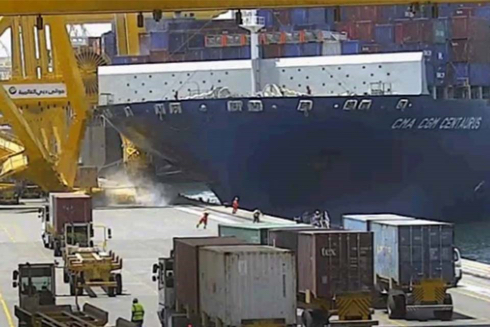
At 1137 on 4 May 2017, the UK registered container ship CMA CGM Centaurus made heavy contact with the quay and two shore cranes while under pilotage during its arrival at Jebel Ali, United Arab Emirates. The accident resulted in the collapse of a shore crane and ten injuries, including one serious injury, to shore personnel.
The accident occurred because the ship was unable to attain a sufficiently high rate of turn into a basin in preparation for berthing. The pilot was unaware of the ship’s speed, and the ship’s bridge team were uncertain of the maximum speed required to complete the turn safely.
There was no agreed plan for the intended manoeuvre, and therefore no shared mental model between the bridge team and the pilot. Consequently, the pilot was operating in isolation without the support of the bridge team, allowing the pilot’s decision-making to become a single system point of failure.
ICS releases new study on Seafarers and Digitalisation
The International Chamber of Shipping (ICS) has released a new study conducted by the Hamburg School of Business Administration (HSBA) on behalf of ICS, regarding the potential effects of autonomous ships on the role of seafarers and the global shipping industry.
In light of growing media interest and the diversity of expert opinions on the subject, the study seeks to separate fact from fiction. Commenting on its release, ICS Secretary General, Guy Platten said: ‘The two-year IMO regulatory scoping exercise for Maritime Autonomous Surface Ships is now well underway to determine how existing IMO instruments can be leveraged to ensure that autonomous ships are safe, secure, and environmentally sound.’
With over 1.6 million seafarers currently estimated to serve in merchant ships trading internationally, the impact of MASS on seafarers requires thorough consideration going forward.
Hundreds of UK troops deploy on Exercise Trident Juncture
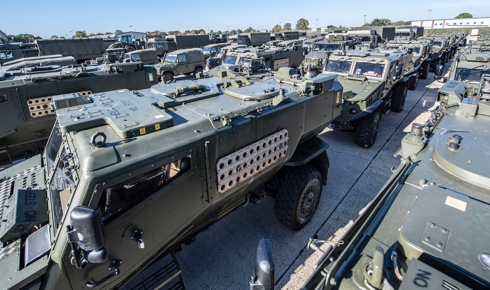

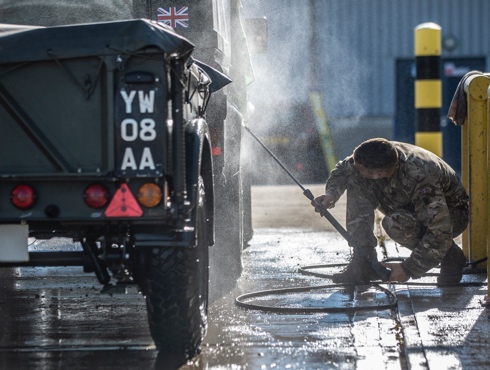
On 10 October hundreds of UK troops arrived in The Netherlands as part of an epic 2,500km road move to Norway for Exercise Trident Juncture, NATO’s flagship exercise in 2018. In Norway, UK Armed Forces personnel will contribute to the large-scale and complex exercise which will test NATO’s most important founding principle of collective defence in an Article 5 scenario – when an attack on one is an attack on all. With some 150 aircraft, 40,000 participants and 10,000 vehicles, this is the largest collective defence exercise NATO has seen in over a decade.
CSIRO radio telescope nearly doubles number of fast radio bursts


Australian researchers using a Commonwealth Scientific and Industrial Research Organisation (CSIRO) radio telescope in Western Australia have nearly doubled the known number of “fast radio bursts” – powerful flashes of radio waves from deep space.
The team’s discoveries include the closest and brightest fast radio bursts ever detected and their findings were reported from CSIRO HQ in Canberra on 10 October and in the journal Nature. Fast radio bursts come from all over the sky and last for just milliseconds. Scientists do not know what causes them but it must involve incredible energy – equivalent to the amount released by the Sun in 80 years, it is claimed.
Assured PNT military technology
It was recently announced from Washington, DC, that Orolia, a world leader in Assured Positioning, Navigation and Timing (PNT) solutions would be presenting a comprehensive suite of Assured PNT military technology devices and systems at the 2018 AUSA Annual Meeting in Washington, DC, currently underway to 10 October. There will also be an introduction to Orolia’s latest wearable battlefield communications equipment.
Orolia’s comprehensive PNT technology devices are reported to deliver precise, secure battlefield communications, situational awareness and decision support for a wide range of mission applications.
ION abstract submission deadline
The deadline for submitting abstracts for the ION co-located International Technical Meeting (ITM) and Precise Time and Time Interval (PTTI) Systems and Applications Meeting is Wednesday, October 10, 2018.
IAIN 16th World Congress
The 16th World Congress of the International Association of Institutes of Navigation (IAIN) will be hosted by the Japan Institute of Navigation (JIN).
This event will be held from 28 November to 1 December at the world-class Makuhari Messe in Chiba, Japan. The World Congress has been held in a different region every three years to discuss technical navigation issues since 1976.
If you have not registered yet you are encouraged to do so with haste on the dedicated Congress website to be found at: www.iain2018.org. A (tentative) program is here.
Boeing teams with Robotic Skies to provide enhanced commercial unmanned aircraft system services
On 2 October it was announced that Boeing and its subsidiaries Jeppesen and Aviall have joined with Robotic Skies, a leading commercial unmanned aircraft system (UAS) support services provider, to develop and deliver industry- leading supply chain management and optimization, analytics, and maintenance, repair, and overhaul (MRO) services for the commercial and civil UAS markets.
ION’s Kepler Award to Dr Oliver Montenbruck
It was reported from ION HQ in Manassas, Virginia, on 2 October that the Institute of Navigation’s (ION) Satellite Division presented Dr Oliver Montenbruck with its Johannes Kepler Award on 28 September at the ION GNSS+ Conference (Miami, Florida) for his pioneering contributions to GPS for navigation of space vehicles, the advancement of multi-GNSS understanding and tracking networks to support scientific and societal benefit.
The Johannes Kepler Award recognizes and honours an individual for sustained and significant contributions to the development of satellite navigation. It is the highest honour bestowed by the ION’s Satellite Division.
Dr Yu Jiao receives the ION Bradford W Parkinson Award
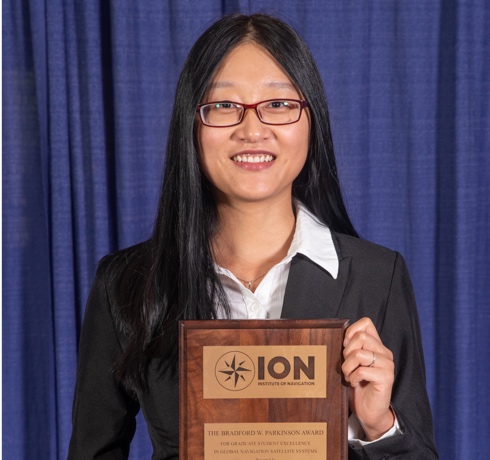
At the ION GNSS+ Conference in September, the Bradford W Parkinson Award was presented to Dr Yu Jiao in recognition of her graduate student excellence in GNSS in her thesis, Low-Latitude Ionospheric Scintillation Signal Simulation, Characterization and Detection on GPS Signals.
The Bradford W Parkinson Award is granted annually to recognize an outstanding graduate student in the field of GNSS, and is presented in honour of Bradford W Parkinson for his leadership in establishing the US Global Positioning System and for his work on behalf of the Satellite Division of The Institute of Navigation.
The annual Royal Navy Photographic Competition
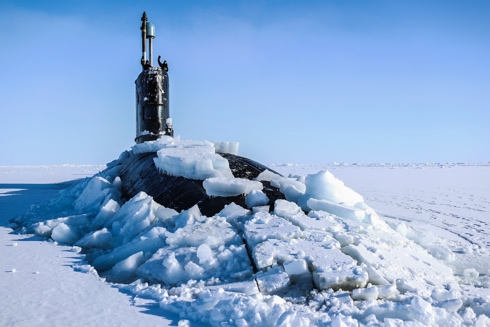
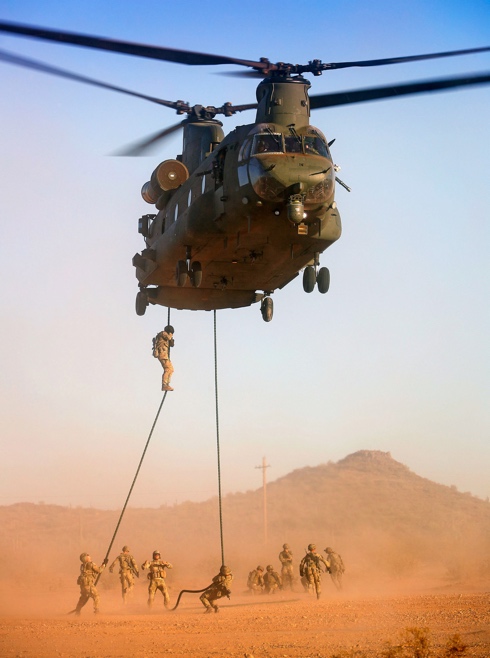
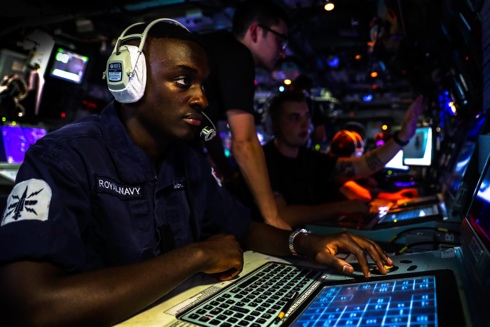
Each year at this time skilled photojournalists are recognised for their perfect pictures in the Royal Navy’s annual photographic competition – the Peregrine Trophy Awards. These were presented at an event at Trinity House in the City of London in the last week of September.
Royal Navy photographers are charged with telling the stories of sailors and Royal Marines around the world through still imagery and video, taking them on deployments with warships and commando units wherever they may go. In the past year their imagery and video has covered everything from submarine operations in the North Pole, flight deck operations on board HMS Queen Elizabeth, joyful homecomings and Royal Marines Commando exercises in hot climates.
(US) ION requests comment on GNSS software defined radio (SDR) metadata standard
It was announced by the (US) Institute of Navigation from its HQ in Manassas, Virginia, on 2 October that the Institute’s GNSS Software Defined Radio Metadata Standard working group is seeking its second and final public comment on the standard through to 30 November, 2018.
The formal standards document is available at: sdr.ion.org where comments may be made by clicking on “Submit a Comment.”
Public comments are being accepted through to 30 November 2018.

